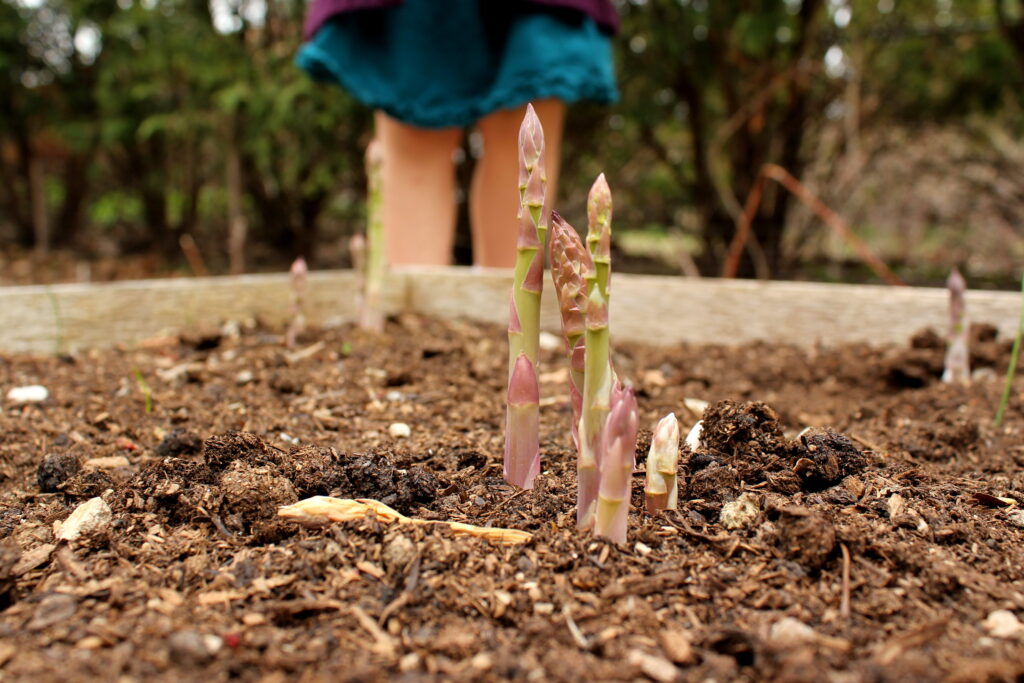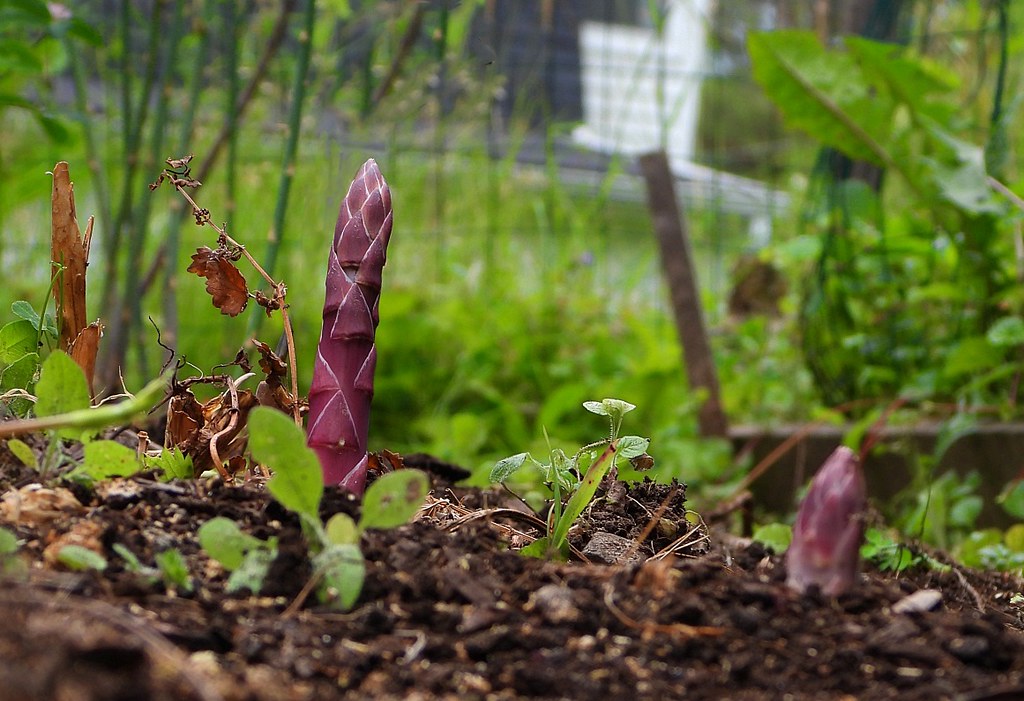Variety Choices for Edible Asparagus
A productive and long-lived asparagus patch starts with planting the right variety for your conditions. Classic varieties, such as “Mary Washington”, are widely available, but newer ones are more productive, more tolerant of common asparagus diseases such as rust and fusarium crown and root rots, and easier to maintain.
Considering Asparagus hybrids and cultivars
There are several criteria you may consider when choosing the right variety of Asparagus for your garden: sex, ferning temperature, flavor, texture, vigor and disease resistance.

Male or female Asparagus?
Boys are better. Asparagus plants can be either male or female. All of the male plants’ energy goes toward feeding the crowns, the perennial roots from which asparagus grows. Female plants produce berries with seeds at the expense of crown growth. Stems that are loaded with fruit can break, weakening the overall stand. Plus, the seeds that fall to the ground often grow into volunteer seedlings that must be pulled. With male plants, you avoid these problems.
The all-male hybrids that are now available produce up to three times as many spears as the old open-pollinated varieties, which are a mix of male and female plants. All-male types, such as “Jersey Giant” and others in the Jersey Series, perform well throughout most of the United States and Canada.
The temperature and the ferning out
Hot springs. Existing Jersey varieties do have some limitations. In areas with very warm springtime temperatures, these varieties tend to “fern out”, the tips become loose and begin to form ferns, when the spears are still relatively small. When that happens, the spears become tough and woody.
If you live in an area that heats up fast in spring, consider one of the recently developed California hybrids, such as “Atlas”. Although not all-male, “Atlas” produces spears that grow much taller before ferning out, so warm-climate gardeners get a heavier harvest of sweet, tender spears.
Northern exposure. If you garden in a very cold climate, go with varieties developed in Ontario, Canada. In trials conducted in Quebec and Ontario, the all-male “Guelph Millennium” variety frequently produced two to three times more high-quality spears than “Jersey Giant”.
Flavor and texture of the purple asparagus variety

If flavor is your top priority, be sure to consider “Purple Passion” and other purple-speared varieties, all of which turn green when cooked. Because they have a little higher sugar content and a little less protodioscin (a compound found in asparagus that gives it the slight bitter taste), purple spears are sweeter and slightly less bitter than the typical green varieties. They are also more tender, because they have less fiber. So, next spring, look for the first all-male purple asparagus.
Vigor and disease resistance of new cultivars
The new cultivars are not only highly tolerant of fusarium crown and root rots and rust, but also are very vigorous and widely adapted. They do well from Canada to Mexico and from New Jersey to California.